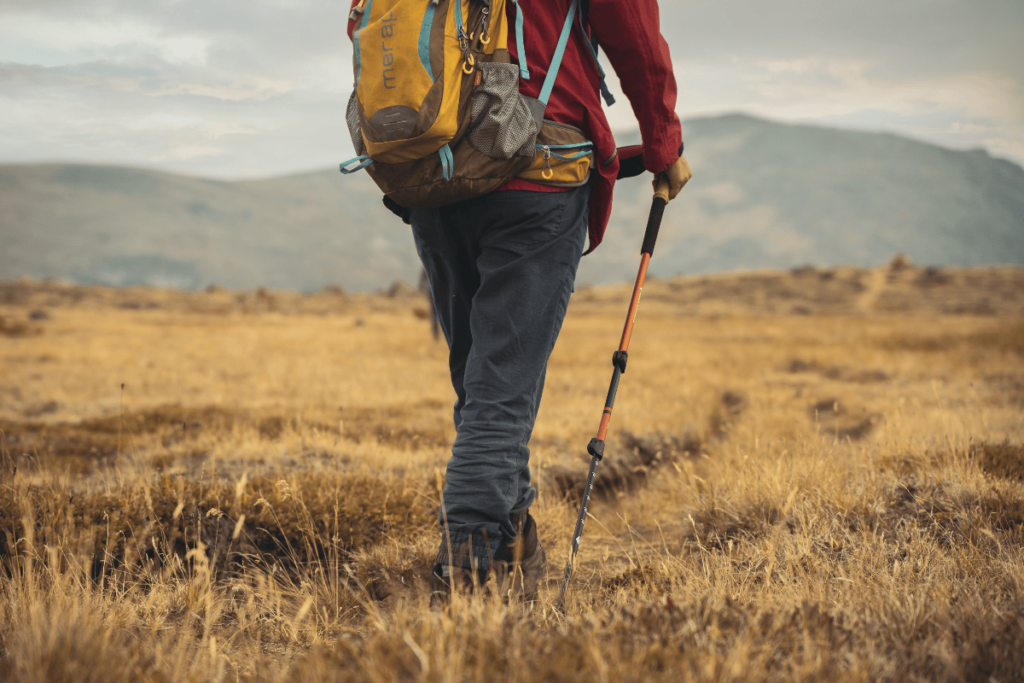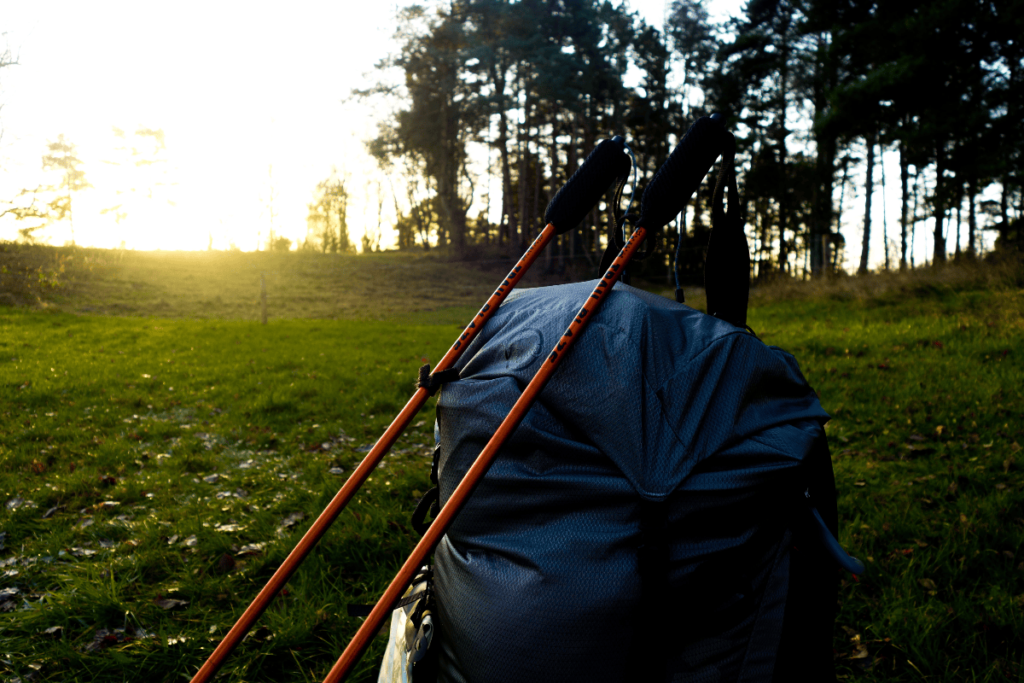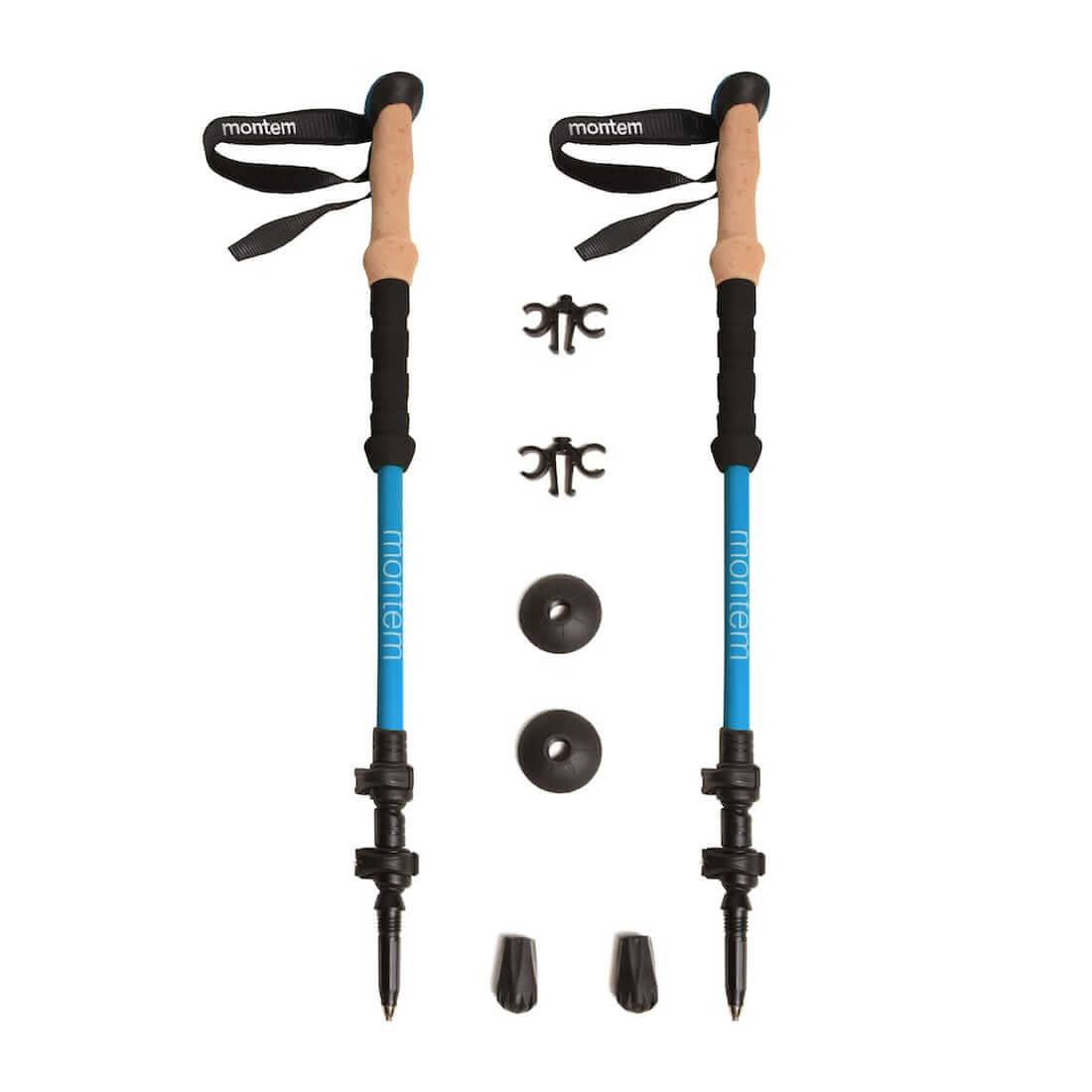How to Use Hiking Poles
Last Update: May 28, 2025
Picture this: You’re halfway up a steep mountain trail, your legs burning and knees aching with every downward step. Meanwhile, the hiker passing you moves with surprising ease, their hiking poles acting like a second pair of legs to propel them forward. That could be you on your next adventure.
Hiking poles aren’t just fancy walking sticks – they’re game-changers that can reduce knee impact by up to 25% and turn grueling climbs into manageable conquests. Whether you’re tackling your first trail or looking to push your limits on technical terrain, mastering proper pole technique will transform how you experience the outdoors. Here’s everything you need to know to hike stronger, longer, and with less pain.
Choose the Right Hiking Poles
The first step in using poles is to choose the right ones. There are a few factors to consider when selecting poles, such as your height, weight, and the type of terrain you’ll be hiking on. In general, taller hikers will need longer poles, while shorter hikers will need shorter poles. Poles are also available in different materials, such as aluminum or carbon fiber, which can affect their weight and durability. Read on for my favorite hiking poles at the end of this article.

Adjust Your Poles Properly
Once you’ve chosen your poles, it’s important to adjust them properly. The height of your poles should be adjusted so that your elbow is at a 90-degree angle when holding the pole. Many poles also have adjustable wrist straps, which should be tightened so that your hand fits comfortably through the strap but can still be easily released in case of a fall.
Use Proper Technique
Using proper technique when hiking with poles can help reduce fatigue and increase efficiency. Start by holding the poles at a comfortable height, with your elbows at a 90-degree angle. Just like when walking or running use the opposite arm from your foot. Right foot = left pole, left foot = right pole. When hiking uphill, use your poles to push yourself forward and upward, using the poles as an extension of your arms. When hiking downhill, use your poles to help slow your descent and provide additional balance and stability.

Maintain a Consistent Rhythm
Hiking with poles can help you maintain a consistent rhythm and pace, which can help reduce fatigue and make your hike more enjoyable. Try to establish a comfortable rhythm that works for you, using your poles to help propel yourself forward and maintain balance.
Be Mindful of Your Surroundings
While hiking with poles can provide additional stability and support, it’s important to be mindful of your surroundings and not become too reliant on your poles. Always be aware of the terrain and any obstacles, and use your poles as needed to maintain balance and stability.
Consider Using Rubber Tips
Many poles come with rubber tips that can be placed on the end of the pole to provide additional traction and stability on hard surfaces. If you’ll be hiking on pavement or other hard surfaces, consider using rubber tips to prevent slipping and provide additional support.
Practice Makes Perfect
As with any new skill, it takes practice to become proficient at hiking with poles. Start with shorter hikes and gradually work your way up to longer and more challenging terrain. Take the time to experiment with different techniques and find what works best for you and your body.

My Favorite Hiking Poles
Montem Ultra Strong Trekking Poles are a must-have for your next adventure. They are relatively inexpensive, usually around $70, and come with a lifetime warranty.
Made with high-quality aluminum, these can withstand the toughest terrains and provide reliable support for hikers of all skill levels. The poles are also adjustable, allowing you to find the perfect height for your needs.
Comfort is key when it comes to trekking poles, and the Montem Ultra Stong Trekking Poles deliver. The soft EVA foam grip ensures a comfortable and secure grip, even in wet conditions. Plus, the poles come with a bonus pair of rubber tips, making them perfect for use on any terrain.
Why Choose Montem Ultra Strong Hiking Poles?
When it comes to outdoor adventures, having reliable gear is essential. These poles are the perfect addition to any hiking or trekking gear collection. Here are just a few reasons why:
Durability: These are made with high-quality aluminum, making them incredibly durable and able to withstand even the toughest terrains.
Comfort: The soft EVA foam grip ensures a comfortable and secure grip, even in wet conditions. Plus, the adjustable height allows for a custom fit, ensuring maximum comfort.
Versatility: The bonus pair of rubber tips makes these perfect for use on any terrain, from rocky trails to slippery slopes.
Value: With their high-quality construction, durability, and versatility, these poles are an excellent value for any outdoor adventurer.
Montem Ultra Strong Trekking Poles

Sold as a pair
- Durable and sturdy aluminum construction
- Adjustable height for a custom fit
- Soft EVA foam grip for comfort and security
- Bonus pair of rubber tips for use on any terrain
- $69.95 at the time of publication
Frequently Asked Questions About Hiking Poles
While not absolutely essential, hiking poles reduce knee impact by up to 25% and provide crucial stability on uneven terrain. They’re especially beneficial for beginners who are still building trail confidence and leg strength.
Setting them too high or too low. Your elbow should be at a 90-degree angle when holding the pole upright. This changes slightly for uphill (shorter) and downhill (longer) sections.
Most trails, yes. However, avoid poles on technical rock scrambling or when you need both hands free. Some wilderness areas also restrict pole tips to protect trail surfaces.
You should be able to slip your hand out quickly in case of a fall, but the strap should support some weight when you push down on the pole. If your wrists hurt, the straps are likely too tight.
For beginners, mid-range poles ($50-80) offer the best value. Ultra-light carbon fiber poles mainly benefit serious backpackers carrying heavy packs over long distances.
Ready to Transform Your Hiking Experience
With proper hiking pole technique in your toolkit, you’re equipped to tackle longer trails, steeper climbs, and more challenging terrain than ever before. Every step forward becomes more confident, every descent more controlled, and every mile less taxing on your body. The mountains are calling, and now you have the skills to answer with strength and grace. Your next adventure awaits – and your knees will thank you for it.